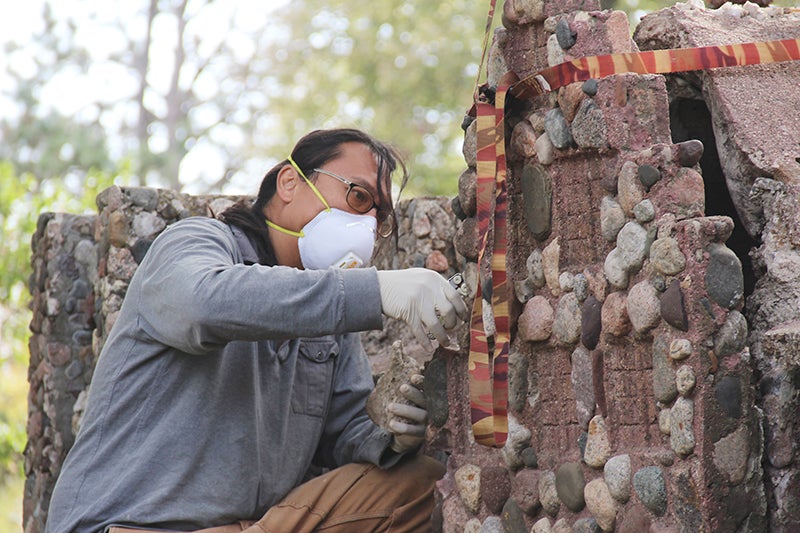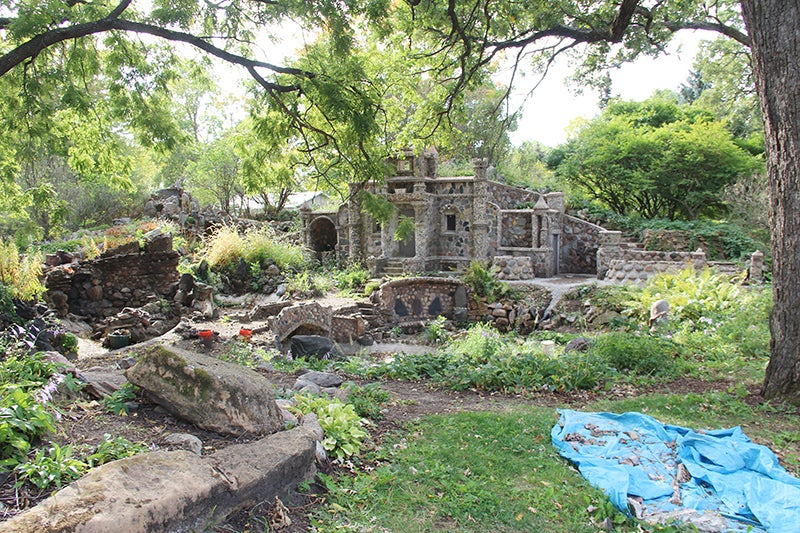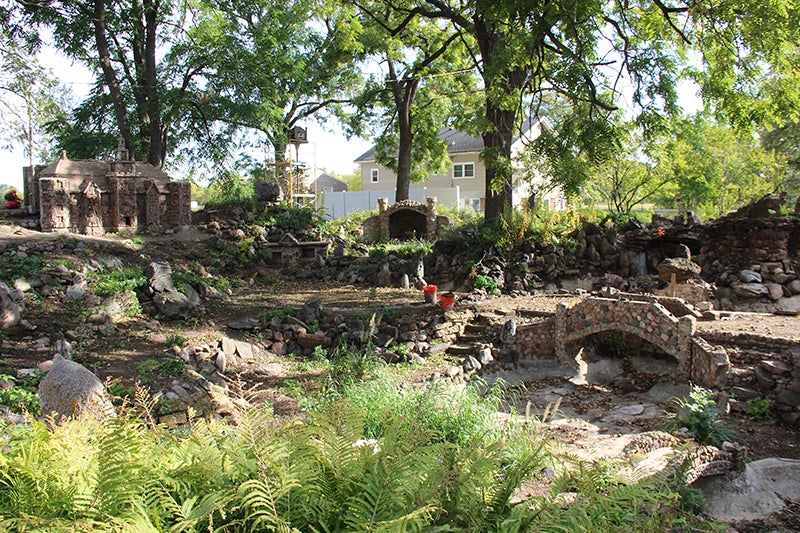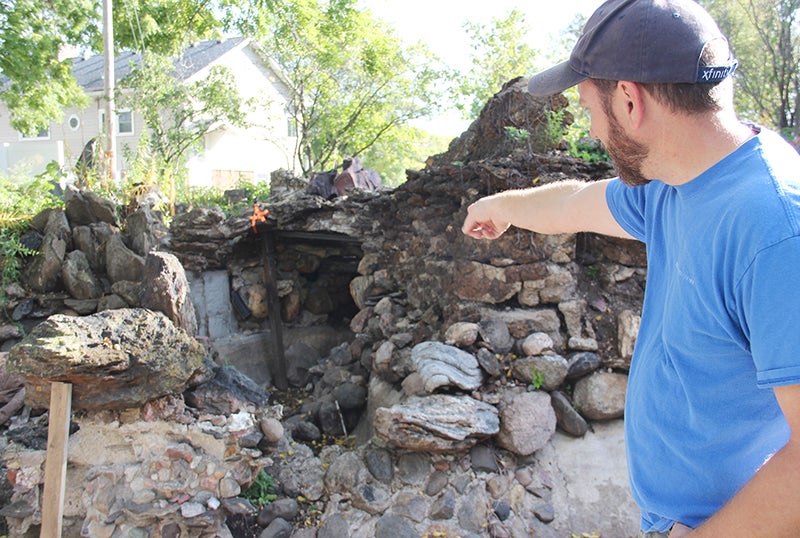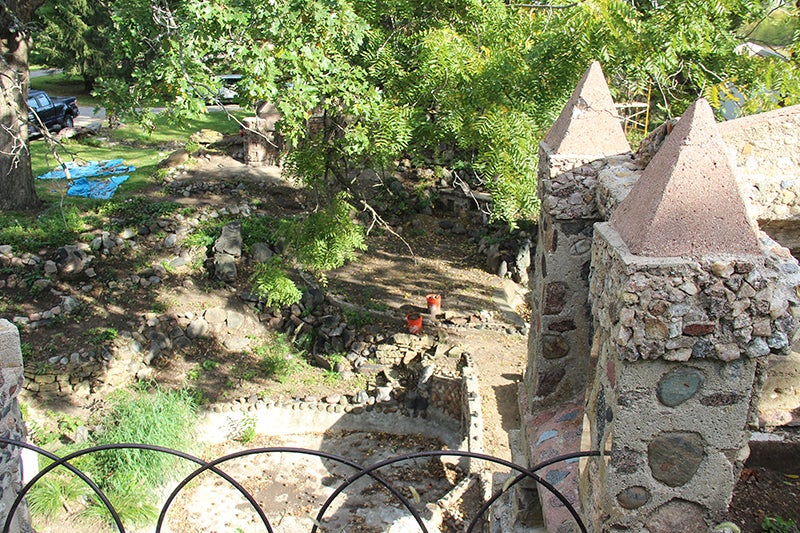Restoring the landmark Itasca Rock Garden
Published 6:54 am Saturday, September 25, 2021
|
Getting your Trinity Audio player ready...
|
Work is slated to be completed at site next fall
Piece by piece, as if they were putting together a large puzzle, two conservators are restoring the landmark Itasca Rock Garden to its original grandeur.
The conservators, subcontracted by Wisconsin-based Kohler Foundation, said when they first saw the property, the rock garden was hard to see because of the overgrown plants in the area. But after the garden was cleared of foliage, their real work began as they scoured the area looking for pieces that had broken off from the sculptures.
In the months since, they have been working to reassemble the pieces and secure them, while at the same time strengthening the sculptures as needed with rebar and improved foundations.
Shane Winter, one of the conservators with International Artifacts, said in some areas the structures had shifted, and in those cases, the structures have had to be cinched together as work was completed.
They use a combination of epoxies mixed with standard fiber glass fillers; epoxies mixed with mortar mix; mortar mix itself and concrete in the restoration and add rebar so the structure doesn’t fall apart again.
Winter said much of the damage that had occurred at the 96-year-old rock garden was from biological growth, water, and expansion and contraction in materials.
The Kohler Foundation purchased the garden and the adjacent house in 2019 with the goal of restoring the garden after it was contacted by Scott Johnson, a grandson of Arthur and Edna Johnson, who had lived on the site and cared for the garden from 1954 to 1985.
It was built in 1925 by John L. Christensen and features a main castle-like structure, grottos, bridges and fish ponds.
Ben Caguioa, the other conservator, said Christensen had sound construction methods. “He built it well,” Caguioa said, noting that he barrel-vaulted underneath the castle. For the structure being almost 100 years old, the concrete seems to be holding up well in areas where it was protected, he said.
Over the years, the garden became a popular destination for both locals and out-of-town people to explore and visit for photographs, whether it be senior photos, weddings or anything in between. In recent years, however, the garden became overgrown after the property went into foreclosure in 2014.
Freeborn County Historical Museum Executive Director Stephanie Kibler said the Kohler Foundation is investing half a million dollars into the project, which included $120,000 that went toward improvements to the house on the property.
The house has new windows, electrical, bathrooms, paint, light fixtures, kitchen cabinets and appliances, she said. The wood floors were refinished, and carpeting was installed upstairs. Work was also done to repair some foundational issues, to paint the exterior and to build an upper deck.
The conservators are living at the house while they are working, and eventually plans call for a caretaker to live at the site, as well.
When the garden is complete, the property will be turned over to the museum, and Kibler said the museum plans to conduct tours for the public and also offer the space as a venue for events such as weddings and other gatherings, with potential for partnering with Three Oak Winery nearby.
“The main goal for us is to be able to tell the story, and not just in Freeborn County but outside,” she said. “Those outside folks will bring business into the city, to the county.”
“I think it’s a really positive thing.”
Kibler said the museum will have a grand opening for the rock garden once it is complete — hopefully in fall 2022.


